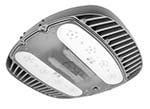NASA Ames Research Center Wind Tunnel Project: Confined Space Lighting
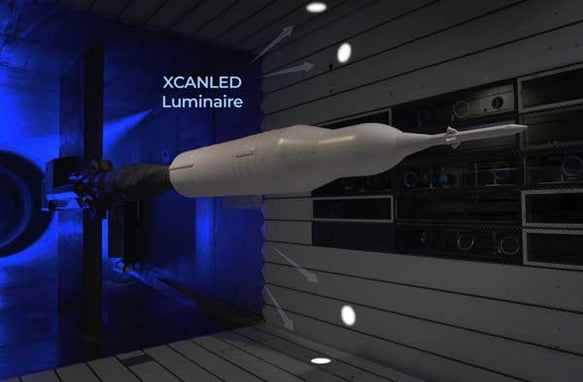
Space Launch System (SLS) installed in the 11-by 11-foot test section. – NASA
A challenging application for lighting systems is the illumination of confined spaces. The NASA Ames Research Center presented this task to Nemalux.
NASA was researching lighting products that were suitable for military and aerospace use.
The lighting had to meet specific requirements:
- Lighting may not interfere with or block wind tunnel airflow
- Have sufficient illumination for high-speed camera sensors
- Must have a flat surface to allow for a flush installation
- Be heavy-duty, able to withstand harsh environments
- Be flicker-free in a high-temperature environment
- It would not compromise the near-vacuum environment.
XCANLED Series met these requirements. Additionally, our GSLEDs also lit confined spaces outside the wind tunnel.

GSLED lighting illuminates the area outside the wind tunnel.
Nemalux Meets NASA
NASA contacted Nemalux to discuss our LED lighting products and gain our expertise. They invited us to the AMES Research Center, where we met the testing team that operated the wind tunnel. Collaboratively, we assessed the needs around lighting for the high-speed cameras. These cameras analyze the performance of each scale model. The scale model could be an aircraft, rocket, or another aerodynamic object. Following our visit, Nemalux designed a lighting recommendation for the wind tunnel project. The NASA team then installed the products.
About the NASA AMES Research Center
The Unitary Plan Wind Tunnel in Moffett Field, California, was built in 1956. It is an impressive example of engineering and design. AMES Research Center is one of ten NASA field centers conducting world-class research. This facility entails development in aeronautics, exploration technology, and science.
The facility continuously seeks to improve its program. Their lighting goals are to increase light levels, decrease costs, and improve visibility. These goals emphasize the importance of the gathered data by the sensors and cameras.
NASA evaluated several manufacturers to find a reliable lighting partner. NASA selected our XCANLED lights and installed them in the ceiling and walls of the wind tunnel. NASA also selected our GSLEDs for outside the wind tunnel in the confined walkways.
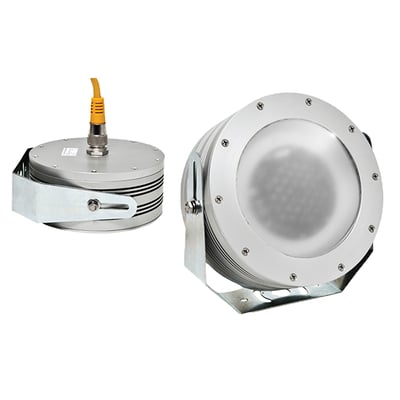
Nemalux's XCANLED is a compact, lightweight LED floodlight. The XCANLED is available with 12 to 24 Volt DC input. Certified for use in harsh and hazardous locations.
XCANLED Series Luminaire Key Features:
- Thermally managed for maximum longevity
- Designed for use in harsh and hazardous locations
- Available with a 6ft pre-wired or quick disconnect cable
- Options are available with 100° flood or 30° narrow beam profile
- Robust construction suitable for indoor and outdoor applications
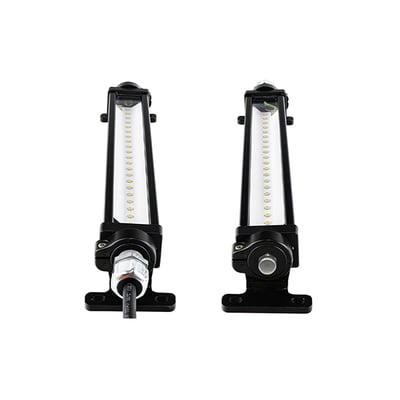
A compact, rugged, and lightweight linear LED fixture. The GS is available in 4 different lengths with AC or DC input. Certified for use in marine, harsh, and hazardous locations.
GS Series Luminaire Key Features:
- Adjustable mounting bracket allows for 360° rotation
- Designed for marine, harsh, and hazardous location use
- Vented enclosure to prevent stress on electronics and gaskets
- Optimized thermal management with extruded aluminum housing
- Lightweight and low-profile housing allows for deployment for complex projects.
Contributing reasons to use these fixtures:
- Maintain optimal case temperature
- Both fixtures operate in low voltage
- Upgraded lighting is impact resistant
- Functions in a low-pressure environment
- Optics and lenses prevent excessive glare
- Light provides a comfortable workplace for operators
NASA is satisfied with the results and the LED lighting package, which remains in operation. The lights have had positive results for the AMES Research Center and affiliated organizations.
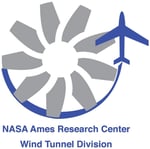
NASA's Ames Research Center, one of ten NASA field centers, is in the heart of California's Silicon Valley. Since 1939, Ames has led NASA in conducting world-class research and development in aeronautics, exploration technology, and science aligned with the center's core capabilities.
Main image: Aerial view of Unitary Plan Wind Tunnel complex with NASA insignia. Image credit: Photographer - Roger Brimmer 06-22-89 (Gallery)
